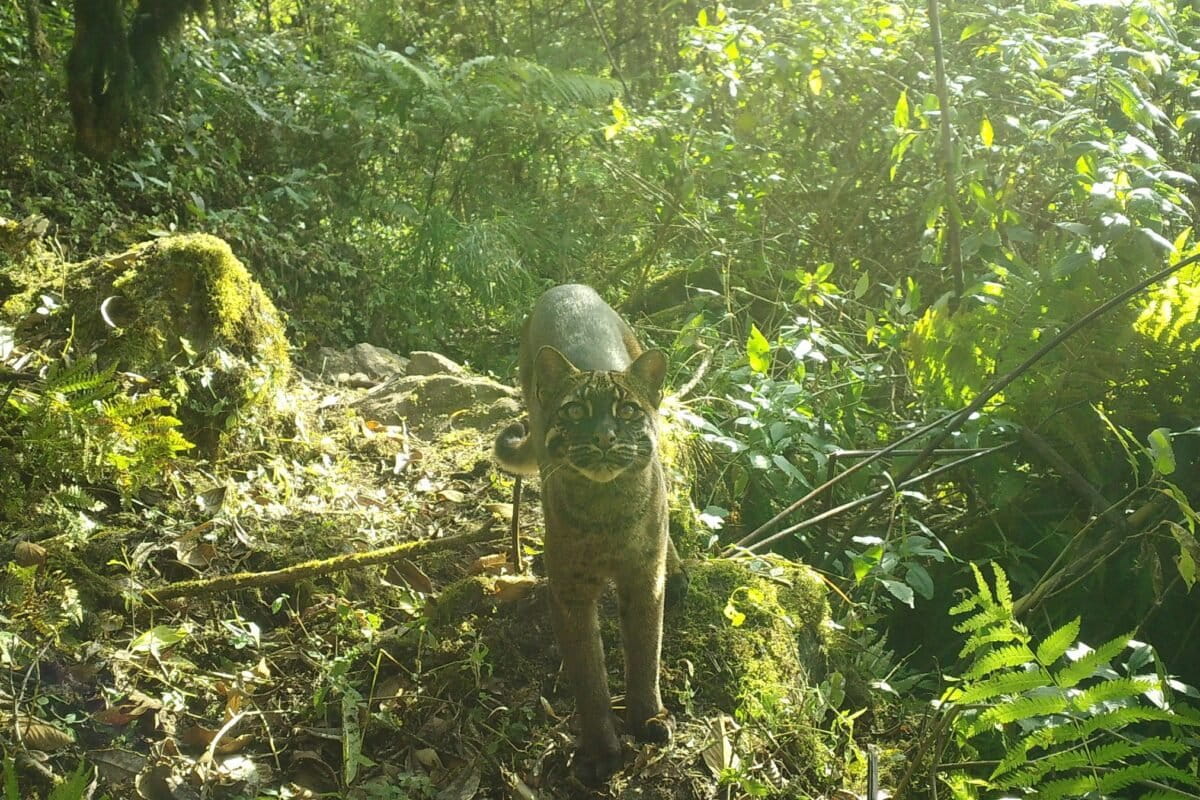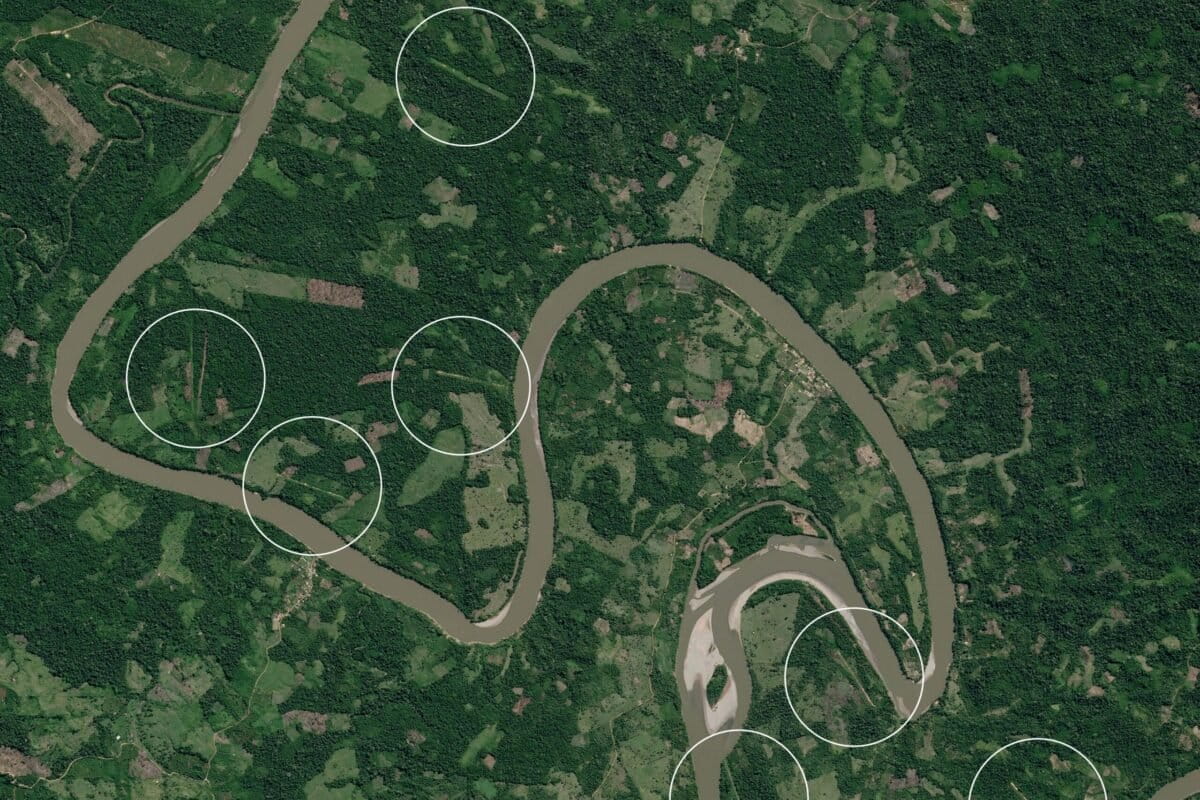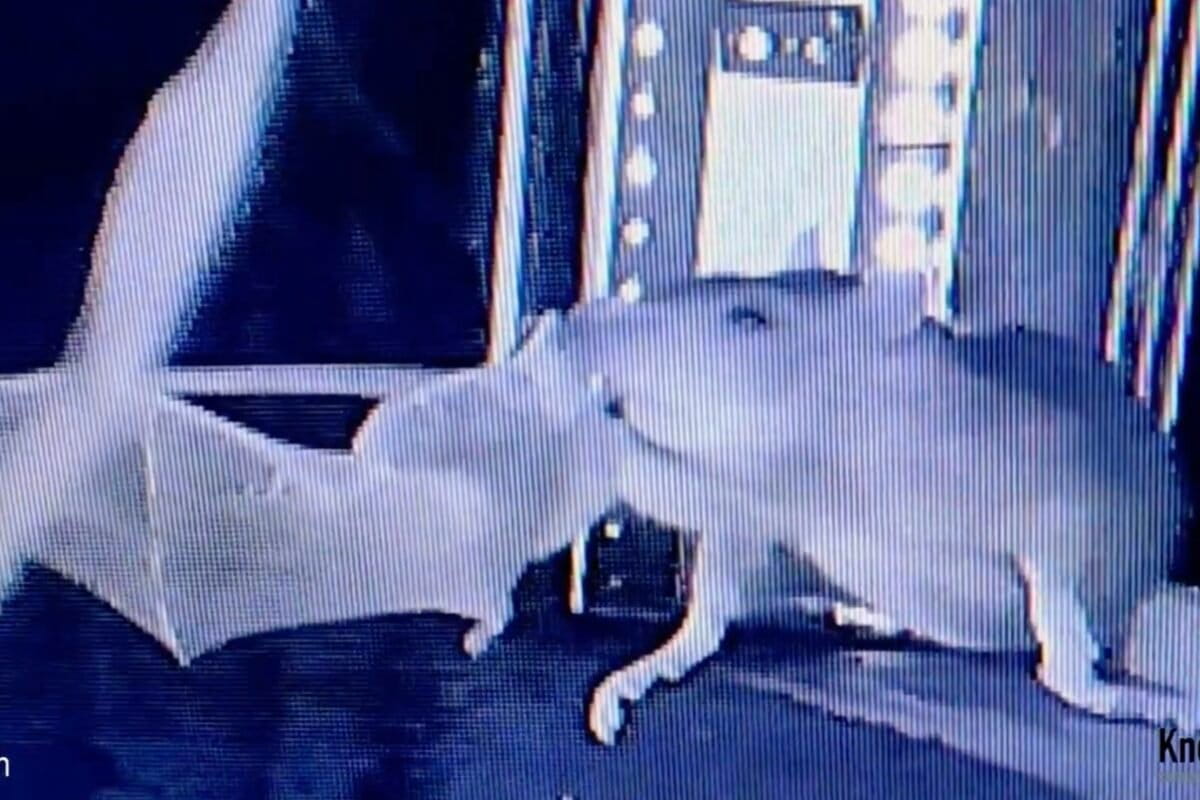- The Asian golden cat (Catopuma temminckii) is a medium-sized cat species that was once abundant across Asia, ranging from India to China. Today its population is undergoing a significant decline.
- That’s resulted in it now being declared a threatened species as its habitat is lost or fragmented, and indiscriminate snaring removes it from forests, particularly in Southeast Asia.
- Targeted research, conservation and funding are rare for this species, resulting in significant knowledge gaps about its basic ecology and threats. That uncertainty is causing some conservationists to say it could warrant endangered status.
- It’s hoped that increasing threat levels imperiling the Asian golden cat will spur donor funding, giving researchers the tools to shine a light on the needs of this lesser-known felid. Nepal has so far led the way in conservation efforts.
See All Key Ideas
A single camera trap image of an Asian golden cat, photographed in Nepal’s Jajarkot district, has expanded this felid species’ range westward by nearly 400 kilometers (248 miles). Out of nearly 60,000 camera trap images snapped in 2024 in the district, this elusive cat showed itself just once.
It’s likely, says Badri Baral, program coordinator with Nature Conservation Initiative Nepal, that more Asian golden cats could be found between Jajarkot and the Gaurishankar Conservation Area, an area until recently believed to mark the felid’s farthest westward distribution.
This positive news about the elusive wildcat, which dwells in forests across South and Southeast Asia, comes at nearly the same time as bad news, as its IUCN status went from near threatened to vulnerable.
A single camera trap image of an Asian golden cat from Jajarkot, has extended its range by nearly 400 kilometers westward in Nepal. Image courtesy of Badri Baral/NCI-Nepal.
Researchers say the Asian golden cat (Catopuma temminckii) was likely once abundant across its range. That’s not the case today, with numbers thinned and populations lost due to an excess of threats including deforestation, snaring, and retaliatory killings. Those risks, along with more accurate occurrence and population data featured in IUCN’s 2023 species assessment, are behind the revised threat status.
The shift to vulnerable “represents a genuine concern,” says Thomas Gray, Tiger Landscape and Recovery Lead with the WWF Tigers Alive Initiative, who was part of the assessment team.
The new IUCN listing also highlights the challenges of assigning a precise threat level to a species with large data gaps, he adds. “There’s enough evidence to suggest vulnerable [status], but, there’s a lot of uncertainty because really there is no place where we’ve got [baseline] estimates of change in abundance over time for the species.”
“It’s always worrying to see when a cat species gets reclassified to a more threatened category, particularly for a species that people thought was once relatively common in the wild,” agrees Wai-Ming Wong, director of Small Cat Conservation Science at Panthera, an NGO.
An Asian golden cat (Catopuma temminckii). Image by Tambako the Jaguar via Flickr (CC BY-ND 2.0).
A cat of many colors
Of the world’s 40 felid species, the Asian golden cat is grouped by IUCN with 33 small cat species, though it’s really a medium-sized wildcat. Its range extends from Nepal and India to China, and from Southeast Asia to Indonesia. Considered a forest specialist, it’s known to also inhabit high altitude regions, with researchers recording it above 4,400 meters (14,436 feet) in Tibet.
Though it may appear somewhat similar to the African golden cat (Caracal aurata), the Asian golden cat is actually closer genetically to the Borneo Bay cat (Catopuma badia), and the marbled cat (Pardofelis marmorata).
Unsurprisingly its name is derived from its yellow-golden colored coat. But this species also displays remarkable variations in coat pattern. These patterns — known as color morphs — include ocelot (a spotted version), golden, cinnamon, gray, tightly-rosetted, and melanistic (black).
An Asian golden cat caught on camera preying on a snake in Malaysia’s Al-Sultan Abdullah Royal Tiger Reserve. This cat species is believed to be a generalist, preying on ungulates, rodents, and other animals in its forest habitat. Image courtesy of Panthera/Pahang Biodiversity Council/DWNP/Enggang.
In 2020, researchers in Bhutan managed to snap images of all six color morphs within the same area. That’s only the second time such a feat has occurred, the other taking place in Dibang Valley, India. These kaleidoscopic variations befuddled some 20th century researchers, with the ocelot morph even believed to be an entirely different species, says Luke Hunter, executive director of WCS’s Big Cats Program.
Exactly why the Asian golden cat has evolved to sport so many color morphs is unclear, though some colorations are more prevalent in northern parts of its range and at higher elevations, says Hunter. That led some experts to suggest these color variants offer advantages while hunting or competing for food with other cat species.
But Hunter is doubtful. “I’m not convinced they necessarily have a huge evolutionary adaptive value,” he says.
Whatever the case, this trait is just one interesting feature of this solitary secretive hunter. Like all cats, C. temminckii is an opportunistic carnivore, seeking out varied small prey including Indochinese ground squirrels (Menetes berdmorei), lizards, snakes, muntjacs, rodents, birds, and hares. In India’s Goral Mountains, it’s reported hunting larger animals like wild pigs and water buffalo calves. Where in close proximity to humans, Asian golden cats will prey on domesticated sheep, goats, and poultry.
As with other elusive small cats, the species remains poorly studied, with large unknowns surrounding behaviors and populations. IUCN rough estimates suggest a global population of around 7,000 mature individuals (but with a broad possible range of 1,000 to 12,000).
An Asian golden cat with a distinctive “ocelot” spotted coat. This felid species displays a wide array of color morphs with at least six recorded. Image courtesy of PZSL/Panthera.
Change in status to ‘Vulnerable’
Data on the golden cat population, though improving, remains scarce. That’s because scant photographic records come largely from studies focused on other species, with these random, though fortuitous snaps, known as bycatch.
Based on this data, the most recent IUCN Red List assessment states that the classification of vulnerable, rather than near threatened or endangered, is marginal. As with many other non-charismatic species, for which research funding and data is limited, the listing only tells part of the story. Experts say C. temminckii may be extinct in Vietnam, critically endangered in China, while being data deficient in Nepal.
Whether the species is vulnerable or endangered remains “a borderline call,” Matthew Sott Luskin, head of the Ecological Cascades Lab at the University of Queensland, wrote in an email.
Uncertainties aside, experts agree this forest-dependent cat is highly vulnerable to habitat loss and snaring, and faring poorly across its range. A paper published in 2021 estimated that of 40 possibly remaining Asian golden cat strongholds in mainland Asia, 77.5% were “seriously threatened by forest loss and hunting.”
Luskin notes that, “Fragmentation of its [forest] habitat is an increasing concern.” Asian golden cats are rarely found in forest fragments smaller than 100km2 (38.6 miles2), or near forest edges. This, Luskin says, bodes poorly for the species, because around 80% of Southeast Asia’s highly fragmented forests now lie within 1km of an edge.
Forest loss and degradation can also bring this felid into closer proximity with people. Experts report that retaliatory killings are a major threat in those parts of its range. In Nepal, for example, animal carcasses are often laced with poison to kill predators, with Asian golden cats and many other species among the casualties. Similarly, shrinking forests in Indonesia lead to the cat preying on poultry and other livestock, creating conflict.
Footage of an Asian golden preying on an orange-bellied Himalayan squirrel in Nepal. Image courtesy of Gyajo Lama/Clouded Leopard Working Group.
Snaring and hunting are majorly impacting the Asian golden cat. A widespread snaring crisis is ongoing in Southeast Asia’s forests, decimating wildlife. A 2020 WWF report estimated that as many as 12 million snares were present in protected areas in Cambodia, Laos and Vietnam, with far greater numbers across the wider Southeast Asian region. Trade in Asian golden cat pelts and parts have been recorded, but experts don’t believe the species is specifically targeted in most locales.
“Much of its distribution is across South and Southeast Asia, and as we know, these are the areas that are undergoing some of the world’s highest deforestation rates, but there’s also high levels of hunting and poaching as well,” says Wong. While the cat is officially protected across much of its range, enforcement is lacking.
Baral believes widespread hunting is occurring in Jajarkot, Nepal, which likely explains why his camera traps only spotted one Asian golden cat there.
A Panthera researcher with a camera trap. Camera trap data for Asian golden cats is accidental, as it is gathered by researchers doing their primary work on other species. Image courtesy of Ryan Peters/Panthera.
“It’s quite important to highlight this Asian golden cat record, because this is an apex species, and during the survey I failed to gather information about many other felid species or canid species,” Baral says, with the only other wild felid detected being a leopard cat (Prionailurus bengalensis).
Gray points to another plausible, but unproven, cause for the decline of C. temminckii: African swine fever virus which has devastated wild pig populations in Southeast Asia.
“Wild pig is probably the key prey of tiger and leopard,” Gray says, but “We’re seeing some evidence in places in Malaysia where smaller cat numbers or smaller cat occurrence may have declined recently. And that potentially could be due to prey competition from the larger carnivore switching [to smaller prey] due to African swine fever impacting the wild pigs.”
All these stressors combine to explain “why the Asian golden cat could be in such a bad conservation state,” he says.
Map showing the Asian golden cat’s distribution including the addition of the new habitat based on the sighting in Jajarkot, Nepal. Image courtesy of Badri Baral/NCI-Nepal.
An urgent call for conservation
But even as threats rise and numbers fall, there are few projects focusing on Asian golden cat conservation, with the species so far mostly benefiting from efforts directed at other “umbrella” species such as tigers; such as improved protected area status, snare removal and others.
“In a lot of these places, if we’re doing tiger conservation right, we’ll be doing Asian golden cat conservation,” Gray explains. Other experts note that initiatives aimed at conserving the clouded leopard (Neofelis diardi) will benefit the species.
But Erwin Wilianto, co-founder of SINTAS Indonesia, an NGO, says that this trickle down protection from umbrella species is not happening in practice at all locations. He emphasizes the need for research and conservation targeting the Asian golden cat, particularly in Indonesia due to threats specific to this species. In Western Sumatra, he explains, extensive deforestation has brought the Asian golden cat in contact with people, resulting in a significant issue with its predation on livestock. “Across most of the [range] countries, [and] especially in Indonesia, there are no NGOs really looking into the species,” he says.
But escalating threats, along with IUCN uplisting, won’t necessarily lead to a big uptick in funding for Asian golden cat conservation. Another small felid, the flat-headed cat (Prionailurus planiceps), while being one of the most endangered cat species on Earth, still receives far less conservation dollars than other species, notes wildcat expert Jim Sanderson, founder and director of the Small Wild Cat Conservation Foundation and member of the IUCN Cat Specialist Group.
“The uplisting of the Asian golden cat to Vulnerable puts it on par with the clouded leopard with which it co-occurs,” he wrote in an email. “This might help us in our dealings with governments.” Wong adds that the uplisting also means the species now qualifies for funding from Panthera’s small cat fund.
A “rosetted” Asian golden cat. Image courtesy of ZSL/Panthera.
Nepal conservation efforts
Conservationists in Nepal are already addressing Asian golden cat threats. In the eastern part of the country, they’re setting up predator-proof goat pens, establishing poaching patrols, and engaging with local communities to instill a desire to protect this and other carnivore species.
Gyajo Lama, a member of the Clouded Leopard Working Group (CLWG), heads up a project that covers five districts in Nepal, and he hopes to expand that in 2026 if more funding becomes available. “It’s very, very necessary to focus … conservation programs on this species,” he says. In Western Nepal, Baral is launching a similar conservation project in the unprotected forest where his camera trap revealed the solitary Asian golden cat.
Both these conservation projects plan to address solutions for some of the root causes of community-cat conflict, but reducing hunting is problematic. “It’s the cat of mystery, and [its protection] is often overlooked compared to bigger cats,” says Lama. “it’s very, very necessary to focus … conservation programs on this species.”
The future still could shine bright for the Asian golden cat, says Hunter, if steps are taken to protect habitat and address snaring. “[Y]ou take that pressure off — if there’s available habitat and protein — they will recover,” he says. “Asian golden cats could certainly recover and probably recolonize… if they just have adjacent habitat.”
An Asian golden cat and its kitten. Image courtesy of Panthera/EMS/DWNP/PTNP/MBP.
Banner image: Asian golden cat caught on camera in Nepal. Image courtesy of Gyajo Lama/Clouded Leopard Working Group.
Citations:
Decœur, H., Amir, Z., Mendes, C. P., Moore, J. H., & Luskin, M. S. (2023). Mid-sized felids threatened by habitat degradation in Southeast Asia. Biological Conservation, 283, 110103. doi:10.1016/j.biocon.2023.110103
Petersen, W. J., Savini, T., Gray, T. N., Baker-Whatton, M., Bisi, F., Chutipong, W., … Ngoprasert, D. (2021). Identifying conservation priorities for an understudied species in decline: Golden cats (Catopuma temminckii) in Mainland tropical Asia. Global Ecology and Conservation, 30, e01762. doi:10.1016/j.gecco.2021.e01762
Kamler, J. F., Inthapanya, X., Rasphone, A., Bousa, A., Vongkhamheng, C., Johnson, A., & Macdonald, D. W. (2020). Diet, prey selection, and activity of Asian golden cats and Leopard cats in northern Laos. Journal of Mammalogy, 101(5), 1267-1278. doi:10.1093/jmammal/gyaa113
FEEDBACK: Use this form to send a message to the author of this post. If you want to post a public comment, you can do that at the bottom of the page.





